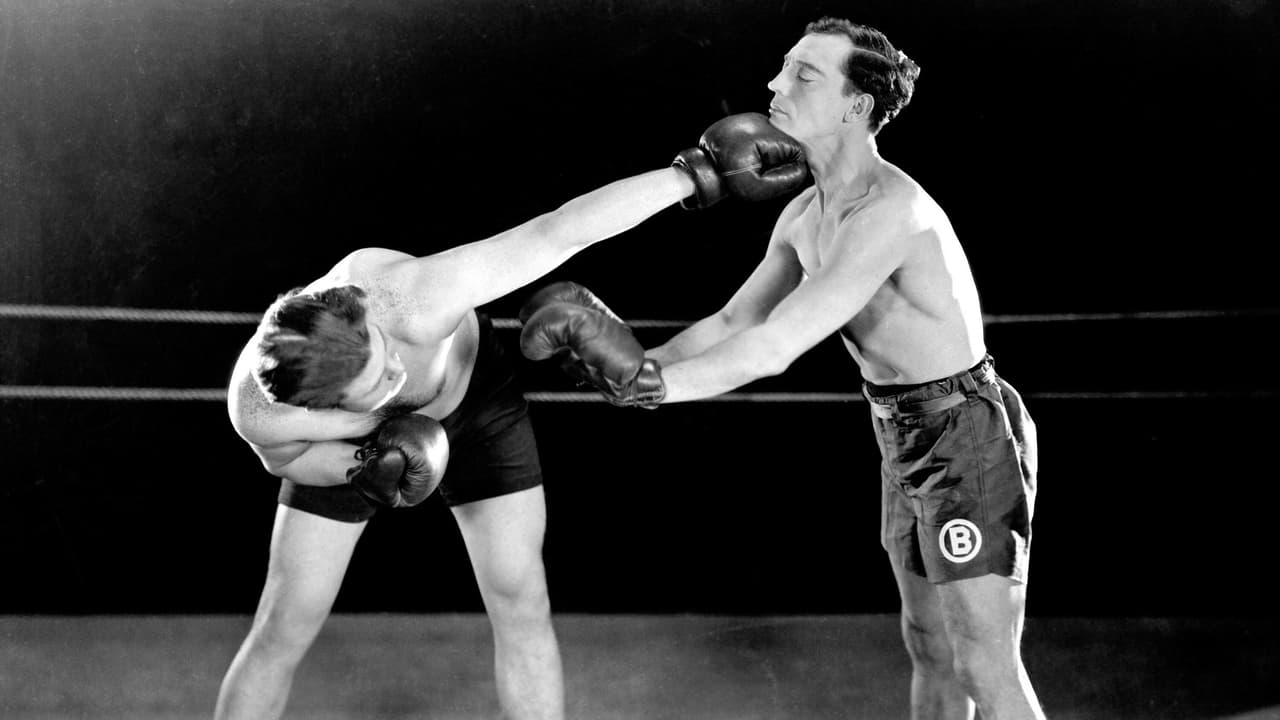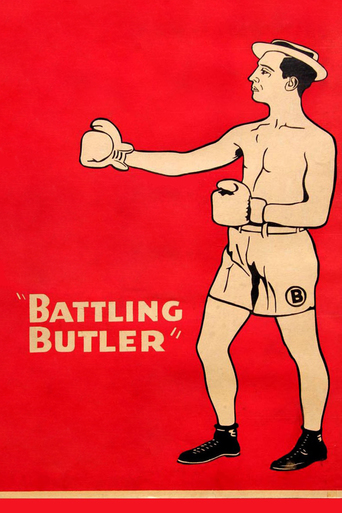

Save your money for something good and enjoyable
... View Morebrilliant actors, brilliant editing
... View Moren my opinion it was a great movie with some interesting elements, even though having some plot holes and the ending probably was just too messy and crammed together, but still fun to watch and not your casual movie that is similar to all other ones.
... View MoreThe story, direction, characters, and writing/dialogue is akin to taking a tranquilizer shot to the neck, but everything else was so well done.
... View MoreBattling Butler (1926) is not Buster Keaton's highest achievement by any means, but it is a fun, lightweight little movie. It's not filled with belly laughs, but great character development, a handsome and shirtless Buster Keaton, and a sweet romantic subplot all compensate.Of note is Keaton's leading lady, Sally O'Neil, who defies the stereotype of the incompetent Keaton love interest. She's spunky, sweet, and able to take care of herself, certainly more so than her beloved.The final fight where Buster lashes out in rage is bizarre, a jolt from the sleepy-eyed look he has throughout the film. He's so ferocious that it almost feels uncharacteristic of Keaton's established screen persona.Overall, worth a watch if you crave some light entertainment.
... View MoreThe first 30 minutes of this Buster Keaton film are some of the stupidest he ever made, at least from what I've seen. I don't blame him; this is the film world where even since this period - around 1920 - marriage is always trivialized and people are always lying. Why was that so frequent in classic movies, in particular? It's disgusting. Here Alfred "Battling" Butler, a spoiled rich young man - in order to keep his girl - lies about being the lightweight boxing champion of the world, because that guy, who has the same name as him, is a hero and he wants to impress her and her big brother and big father. He wants to marry her right away because she's pretty and she consents as soon as she hears he's a big shot. Boy, those are great reasons for marriage!After the quickie marriage, Buster heads off for training camp for his supposed title defense against the "Alabama Murderer." Later, the real "Battling Butler," to do the impostor a favor and save his marriage, lets him be the real thing and fight while he retires.The training - and the first real laugh of the film - isn't until 47-minute mark when Buster begins training and can't get over the ropes. He is helpless outside and inside the ring as it turns out.The training escalates as Buster begins roadwork the next day.....but he isn't up to training or fighting or any of this. Fortunately, a big twist occurs late in the movie which saves Buster from going into the ring, although the little man does save his honor after he fights the real "Battling Butler."I would agree with the critics on this one: it's far from Buster's best work.
... View MoreThis is a very good Buster Keaton film. However, some might be put off by the scarcity of pratfalls and belly laughs compared to many of his other efforts. That's because this film is much more plot driven and character driven than most silent comedies--and that works well for me, though you might miss the more acrobatic and violent character he plays in his shorts and in some of his full-length ones.Buster plays a spoiled rich young man who really needs to be toughened up--so his dad tells him to go camping. The next segment is probably the funniest, as it cuts to a "wilderness" scene--complete with a butler, tub, poster bed, and all the other modern conveniences (that's the way I'd like to camp!). While "camping" he meets a nice girl and he is smitten. Instead of Buster going to propose, he sends his butler--who immediately knows her dad will say "no" because he wants a virile, more "studly" son-in-law. So, the butler panics and says that Buster is the famous boxer Alfred "Battling" Butler! Now, the two men do have the same name and are roughly the same size--but that's about the only similarity. Daddy gives his hearty approval and Buster is married. But, when the real Butler wins the title, Buster has a hard time pretending any longer. Later, the real Butler retires and Buster takes his place--going to training camp and working for a title defense! You'll have to tune in to see what happens next, as this only takes you through about half the film--watch it and enjoy.
... View MoreKeaton shows off his physical mimicry as a wealthy fop who must train as a prize fighter, but the climactic payoff doesn't deliver so great a punch: Keaton misses the Big Bout and fights the winner in the locker room! Good stuff, but a lesser effort.
... View More